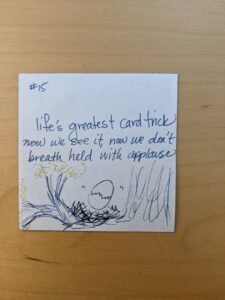I love how the various bits of language I’m studying line up: in Spanish, commanding someone to produce proof (Prove it!) is pruébalo. That’s also the same word that’s used when you want someone to TRY something. (As a matter of fact there’s a very colorful travelogue/cooking show on YouTube by the same name.) In Dutch, the meanings don’t overlap; to try is probeer, and the old Latin word is probare, which has a bit in common with the English word “probation.” From Merriam-Webster:
“Proof is an alteration of Middle English prove, which itself is from Anglo-French preove, meaning “evidence,” based on an Old French word meaning “test.” … In Middle English, proof had meanings relating to both the presenting of evidence that demonstrates a truth and the establishment of fact or truth through testing.
As you’ll recall, pudding in history has been savory – think haggis. Minced meat, spices, cereals and blood stuffed into guts and boiled. And whether or not that minced, spiced meat the cook used was spoiled, or any good? Well, you had to prove it.
(Americans use a shortened version, simply “the proof is in the pudding,” which author Henry Dircks first used in his 1863 novel Joseph Anstey, and which appeared again in an 1867 issue of The Farmer’s Magazine. No one knows when it arrived on these shores).
The proof of the pudding is in the eating

hatching
life’s greatest card trick
now we see it, now we don’t
breath held with applause.
Poetry Friday today is hosted today at Radio, Rhythm & Rhyme.
